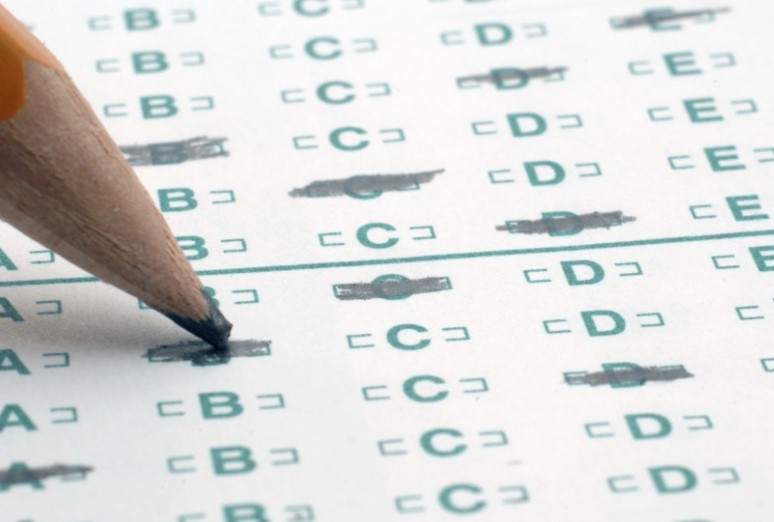A score of 36 is the highest possible on the ACT. By taking practice tests, understanding how the exam is graded, and preparing properly, students can earn this score. Find out how you can earn a 36 on the ACT by reading on.
What is the Highest Possible ACT Score?
A student can earn a 36 on the ACT. The Composite Score is the average of the four parts of the test: English, mathematics, science, and reading.
How is the ACT Graded?
ACT scores are based on your abilities in each of the four sections. Each section receives a score between 1 and 36, and your Composite is the average of those four scores.
In order to understand how the ACT is scored, you should know the following:
- Incorrect answers do not deduct points from the ACT. No penalty is imposed for guessing on questions you don’t know the answer to!
- The ACT counts the questions you answered correctly. Scale scores are calculated from this raw score.
- A whole number is rounded off of the Composite Score.
The ACT Writing is Not Included in Your Composite Score
While you may have selected the ACT Writing section, this score will be kept separate from your Composite score and is graded differently. A score of 12 is the highest possible, while a score of 2 is the lowest. In addition, there are four domain scores (2 – 12), which are Ideas and Analysis, Development and Support, Organization, and Language Use and Conventions.
How Can You Score a 36 on the ACT?
It is not easy to score the highest possible score on the ACT! Scores of 36 on an individual section, let alone the entire test, are quite impressive. It is, however, possible. Out of over 1.6 million students in 2020, 5,579 did so.
It’s important to start your prep early if you’re aiming for a 36. The following tips will help you achieve the perfect ACT score.
1. Have the Right Approach to Practice Tests
When it comes to ACT prep, taking a practice test is the first step. By doing this, you will gain a better understanding of how the exam works, the types of questions that are asked, and your strengths and weaknesses.
2. Take Your First Practice Test
Take an ACT practice test right out of the gate before you start studying for the test. With minimal preparation and practice, see how you do. As you aim for that 36, this will give you direction for the weeks and months ahead.
3. Identify Your Strengths and Weaknesses
The ability to identify your strengths and weaknesses on the ACT exam is one of the biggest benefits of taking practice tests. There are some students who may find they’re better suited for the SAT at this point. Knowing your weaker areas gives you direction on where to focus your study efforts.
Score your first practice test after you have completed it. In what areas did you succeed and where did you fall short?
4. Study, Study, Study
You can start studying once you know where your weaknesses are. For example, if you did poorly on the ACT math but well on the other three sections, you should spend more time on Math. While you shouldn’t ignore the other sections, you should focus more on mathematics compared to the other sections.
Flash cards, ACT study books, mobile apps, and other resources can be used to prepare for the ACT.
5. Take Additional Practice Tests
Taking practice tests between study periods can be helpful. Tracking your progress will be easier with this approach. Perhaps you are doing better in math and reading needs improvement.
The practice tests you take should guide your study approach, but your ACT prep shouldn’t be dominated by them. Exam after exam won’t advance you much.
6. Always Follow the “Rules” of the ACT
It is essential to study for the ACT, but it isn’t the only thing you need to do. Practice tests should always recreate the “real deal.” That means adhering to the same rules you would face on test day: no turning back to previous sections, no exceeding time limits, and taking scheduled breaks.
Despite being able to handle the subject matter just fine, students find time constraints to be a real challenge. Taking your practice tests under these constraints will ensure you’re prepared for anything on test day.
7. Work with a Tutor
The ACT can also be prepared by working with a tutor! You may find someone in your local area, through your high school, or online. With structured programs, they can help you reach your goals.
ACT tutors, however, can be expensive and aren’t suitable for everyone. When considering working with a tutor, students should compare their options. There may also be study groups available through schools.
8. Take Your FIrst ACT Early
You should take your first ACT as soon as possible. It can even be used as a practice test! As a result, you have plenty of time to improve your score and aim for the 36, while also gaining some experience.
9. Keep Retaking the ACT
Your very first ACT test is unlikely to result in a 36! To keep trying for the top score, you should keep taking the official ACT. Between sophomore year and November or December of your graduating year, you have quite a few opportunities to take the ACT.
It is possible to earn a 36 on the ACT, but you can’t go into the test unprepared. With practice tests, a tutor, and the right approach to studying, you can achieve a top score.

